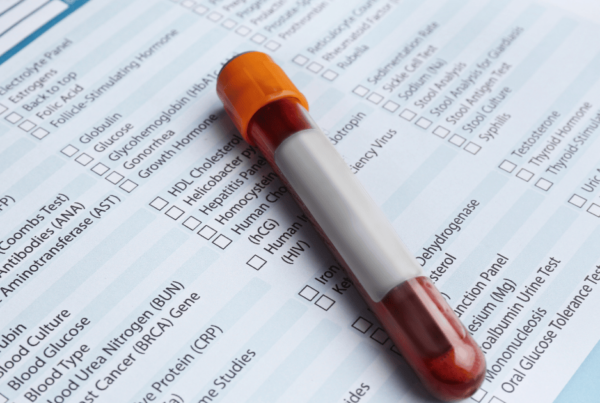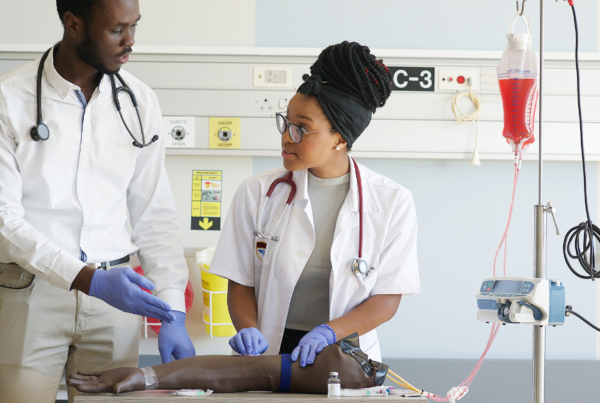Phlebotomists are often unsung heroes in the healthcare system, performing a role that is crucial for accurate diagnoses, effective treatment, and patient care. Understanding how do phlebotomists help patients sheds light on the many ways they contribute to healthcare beyond the simple act of drawing blood. This article delves into the essential functions of phlebotomists, their impact on patient comfort, the accuracy of medical tests, and their role in supporting ongoing patient care and research. This comprehensive guide is intended for current and prospective phlebotomists, as well as medical professionals involved in blood draws.
| Key Takeaways |
| Phlebotomists are integral to the healthcare system, responsible for drawing blood, ensuring sample accuracy, and supporting patient care. |
| Patient comfort is a priority. Phlebotomists use their skills and empathy to reduce discomfort and anxiety during blood draws. |
| Accurate sample collection is essential for reliable diagnoses and effective treatment. Phlebotomists follow strict protocols to ensure sample integrity. |
| Phlebotomists contribute to research and treatment, supporting ongoing patient care and advancing medical knowledge. |
| Professionalism and continuing education are critical for maintaining high standards in phlebotomy. |
The Essential Role of Phlebotomists in Healthcare
Phlebotomists serve as a bridge between patients and the diagnostic process. Their responsibilities encompass several critical areas:
- Drawing Blood: One of the primary duties of a phlebotomist is to draw blood samples from patients. This task requires precision and expertise to ensure that the blood is collected efficiently and with minimal discomfort. Understanding how do phlebotomists help patients involves recognizing their skill in adapting to different patient needs, whether it’s drawing blood from a vein or a small capillary.
- Patient Interaction: Phlebotomists frequently interact with patients, often during a vulnerable time when they might be anxious or fearful. Effective communication is key. By explaining the procedure, answering questions, and offering reassurance, phlebotomists help to alleviate patient anxiety and build trust. This is a vital part of how phlebotomists help patients, as it directly impacts their comfort and overall experience.
- Specimen Handling: Once the blood is collected, proper handling and labeling are crucial. Phlebotomists must ensure that samples are stored and transported correctly to prevent contamination and degradation. Accurate labeling helps in the correct identification of samples, which is essential for reliable test results. This aspect of their job is integral to how do phlebotomists help patients by ensuring the accuracy of diagnostic processes.
- Data Entry: Phlebotomists are also responsible for maintaining accurate patient records. This involves entering information about the sample and ensuring that it is linked to the correct patient. Proper data entry helps in tracking test results and managing patient information efficiently, further illustrating how phlebotomists help patients by supporting the administrative side of healthcare.
Patient Comfort and Care
Phlebotomists play a significant role in ensuring patient comfort during blood draws. This aspect of their job is vital for a positive patient experience and involves several practices:
Building Trust
Phlebotomists often encounter patients who are nervous about having their blood drawn. Building a rapport and establishing trust can make a significant difference. Phlebotomists use clear communication, a gentle approach, and empathy to ease patients’ concerns. This is a direct reflection of how do phlebotomists help patients by creating a supportive environment.
Minimizing Discomfort
Minimizing discomfort during blood draws is essential. Phlebotomists use techniques such as choosing the appropriate needle size and insertion point to reduce pain. Quick and precise actions also help in making the process as smooth as possible. Understanding how phlebotomists help patients includes recognizing their role in minimizing physical discomfort.
Explaining Procedures
Providing clear explanations about the procedure helps patients feel more in control and less anxious. Phlebotomists take the time to explain what will happen, how long it will take, and what patients might experience during and after the draw. This is an important part of how do phlebotomists help patients by ensuring they are well-informed.
Ensuring Accurate Diagnoses
Accurate blood samples are critical for diagnosing various health conditions. Phlebotomists contribute to diagnostic accuracy in several ways:
Proper Collection Techniques
Phlebotomists are trained to use the correct techniques for drawing blood. This ensures that the samples are collected in a manner that minimizes errors and provides accurate results. They follow protocols to avoid issues such as hemolysis or contamination, which is a key aspect of how phlebotomists help patients by ensuring reliable diagnostic information.
Preventing Contamination
Blood sample contamination can cause inaccurate findings. Phlebotomists are trained in proper sample handling and labeling to prevent contamination. They use sterile equipment and follow hygiene practices to ensure sample integrity, which is a crucial part of how do phlebotomists help patients by maintaining the quality of test results.
Timely Sample Collection
Some tests require samples to be collected and analyzed within a specific timeframe. Phlebotomists ensure that samples are collected promptly and delivered to the lab quickly to meet these requirements. Timely sample collection is a significant aspect of how phlebotomists help patients, ensuring that test results are available when needed.
Supporting Treatment and Monitoring
Phlebotomists support patient treatment and monitoring in various ways:
Regular Monitoring
For patients with chronic conditions, regular blood tests are necessary to monitor their health. Phlebotomists facilitate these tests, helping to track the progression of diseases and the effectiveness of treatments. This ongoing support is a critical component of how do phlebotomists help patients.
Blood Transfusions and Donations
Phlebotomists are involved in collecting blood for transfusions and donations. This is crucial for patients undergoing surgeries, trauma care, or treatments that require blood products. Their role in this process is an essential part of how phlebotomists help patients by ensuring a steady supply of blood products for various medical needs.
Research Contributions
Blood samples collected by phlebotomists also contribute to medical research. These samples are used to study diseases, develop new treatments, and advance scientific knowledge. Phlebotomists’ contributions to research illustrate another dimension of how do phlebotomists help patients by supporting advancements in medicine.
Phlebotomy Tools and Techniques
Phlebotomists use a range of tools and techniques to perform their duties effectively:
- Needles and Syringes: Choosing the right needle size is important for patient comfort and sample accuracy. Phlebotomists are trained to select and use needles and syringes appropriately based on the patient and the type of blood draw required. This expertise is an integral part of how phlebotomists help patients by ensuring the procedure is as comfortable as possible.
- Vacutainers: Vacutainers are used to collect multiple samples from a single blood draw. They are designed to maintain the integrity of the sample and simplify the collection process. Understanding how do phlebotomists help patients includes recognizing their use of specialized equipment to streamline the blood collection process.
- Tourniquets: A tourniquet helps to make veins more visible and easier to access. Phlebotomists apply it carefully to ensure it is effective without causing undue discomfort to the patient. This technique is an important part of how phlebotomists help patients by facilitating a successful blood draw.
- Alcohol Swabs: Alcohol swabs are used to clean the draw site before the needle is inserted. This prevents infection and maintains a sterile atmosphere. The use of alcohol swabs is a key aspect of how do phlebotomists help patients by maintaining hygiene and reducing the risk of complications.
- Bandages and Gauze: After the blood draw, phlebotomists use bandages and gauze to stop bleeding and protect the draw site. Proper application helps to prevent complications such as bruising or infection. This final step is part of how phlebotomists help patients by ensuring their post-procedure care.
The Importance of Professionalism and Continuing Education
Maintaining a high standard of professionalism and staying updated with the latest practices are essential for phlebotomists:
- Certification and Training: Certification ensures that phlebotomists have the required skills and knowledge. Ongoing training helps them stay current with industry standards and best practices. This ongoing education is a vital aspect of how do phlebotomists help patients, as it ensures they are providing the best care possible.
- Continuing Education: Phlebotomists must engage in continuing education to keep up with advancements in phlebotomy techniques and technologies. This helps them provide the best care and adapt to changes in the field. Understanding how phlebotomists help patients includes recognizing their commitment to professional development.
- Professionalism: Adhering to ethical standards and maintaining a professional demeanor is crucial. Phlebotomists must handle patient information confidentially and perform their duties with integrity. This professionalism is a fundamental aspect of how do phlebotomists help patients by ensuring trust and confidence in their services.
FAQs
What does a phlebotomist do?
A phlebotomist draws blood from patients for tests, transfusions, donations, or research. They also handle and label samples, maintain patient records, and ensure patient comfort during the process.
How do phlebotomists ensure patient comfort?
Phlebotomists ensure patient comfort by communicating clearly, using appropriate techniques to minimize discomfort, and providing reassurance throughout the blood draw process. This is a key aspect of how do phlebotomists help patients.
Why is accurate blood sample collection important?
Accurate blood sample collection is crucial for reliable test results, correct diagnoses, and effective treatment. Errors in sample collection can lead to incorrect diagnoses and inappropriate treatment, demonstrating another dimension of how phlebotomists help patients.
What tools do phlebotomists use?
Phlebotomists use various tools, including needles, syringes, vacutainers, tourniquets, alcohol swabs, and bandages. Each tool has a specific purpose to ensure the blood draw is performed efficiently and safely.
How can I become a phlebotomist?
To become a phlebotomist, you typically need to complete a certification program and pass an exam. Some programs also include hands-on training and clinical experience, which are integral to understanding how do phlebotomists help patients.
What is the role of a phlebotomist in medical research?
Phlebotomists collect blood samples used in medical research to study diseases, develop treatments, and advance scientific knowledge. Their work contributes to important discoveries and improvements in healthcare, highlighting another aspect of how phlebotomists help patients.
Conclusion
Understanding how do phlebotomists help patients highlights the critical role they play in the healthcare system. From ensuring patient comfort and accuracy in diagnoses to supporting ongoing treatment and research, phlebotomists are essential to providing high-quality patient care. Their expertise, professionalism, and dedication make a significant impact on patient outcomes and the overall effectiveness of healthcare services.
Discover How Phlebotomists Make a Difference!
Explore our guide to understand the crucial role phlebotomists play in patient care, from ensuring accurate diagnoses to providing comfort. Click here to read more and see how their expertise impacts healthcare every day!







